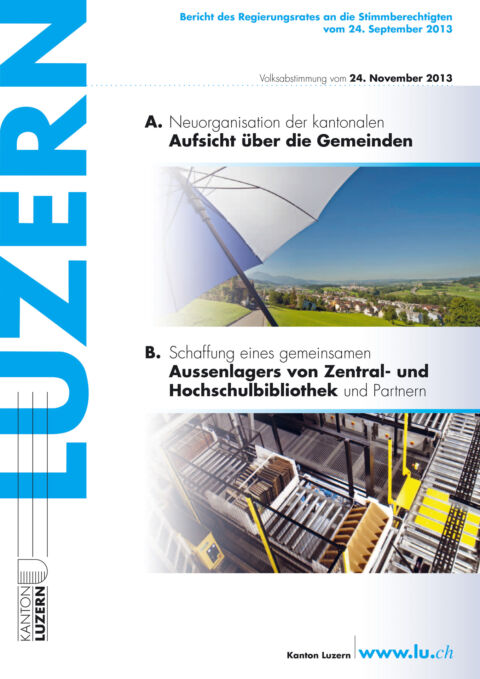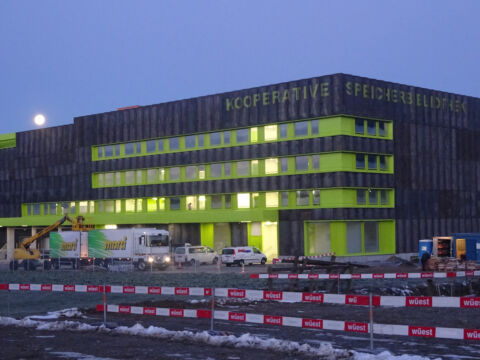2014
2014 was an extremely important year for the Cooperative Storage Library Switzerland, marking the founding of both its management organisations:
Founding of the Cooperative Storage Library Switzerland (CSLS). On 27.03.2014 the Association assumes responsibility for operations of the CSLS. Operations begin on 01.10.2015.
Founding of the Speicherbibliothek AG public limited company (plc) on 08.05.2014. The plc provides the financial means necessary for construction – some CHF 31 million. From this date on, the plc owns the plot and building. The Association becomes the sole tenant and manager of the infrastructure.
Construction of the building also begins, with the official ground-breaking ceremony taking place on 10.11.2014.

(from the left) Dr. Ulrich Niederer, Central University Library Lucerne / Mike Märki, Senior Project Manager, Lucerne Department of Education and Culture / Dr. Wilfried Lochbühler, University Library of Zurich / Felix Winter, University of Basle / Verena Bider, Central Library of Solothurn / Franz Hupfer, President of the Board of Directors, Speicherbibliothek AG / Marcel Schwerzmann, State Councillor of the Canton of Lucerne / Peter Probst, Central Library of Solothurn / Christoph Tschumi, University of Basle / Prof. Dr. Susanna Bliggenstorfer, Central Library of Zurich



